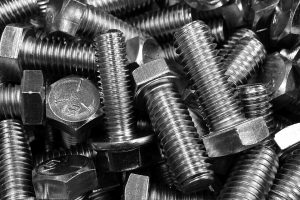
Fasteners offer a simple and effective way to temporarily join two more objects. But regardless of how they are used, many fasteners rely on threading to perform their intended function. Threading allows male fasteners and female fasteners to connect to each other using rotational force. As a result, linear force alone isn’t enough to separate the fasteners after they’ve been connected. Only external rotational force will cause the connected fasteners to separate.
While most people are familiar with fasteners and how they work, many are unfamiliar with the process used to create their threading. In this post, we’re going to reveal the steps used to create threading on fasteners.
Tap and Die Sets
The threading on fasteners such as screws, bolts and nuts are created using a tap and die set. Not all fasteners require the use a tap and die set. Rather, these tools are only used threaded fasteners. For female threaded fasteners, a tap is used to create the threading. For male threaded fasteners, a die is used to create the threading.
How a Tap Works
A tap is a tool used to create threading on female fasteners. It typically consists of a long and cylindrical piece of metal. The top portion of the tap is smooth, whereas the bottom portion features grooves that cut the female threading into an unfinished fastener.
Taps are relatively simple and straightforward to use. The unfinished female fastener is secured to vise or machine, at which point the tap is rotated into and through the center of the fastener. As the tap rotates through the fastener, it creates female threading to support male fasteners.
How a Die Works
A die, on the other hand, is a tool used to create threading on male fasteners. Most dies consist of a flat and cylindrical piece of metal with a hole in the middle. The interior perimeter of this hole contains grooves that, like with a tap, create threading when used on an unfinished fastener.
To create male threading on a fastener using a tap, the fastener must first be secured in place — held vertically upside down — using a vise or machine. Next, an appropriately sized die is placed over the fastener, with the opening in the middle of the die fitting over the fastener. The die is then turned using a bar or wrench, allowing it to form new threading around the exterior of the male fastener.
